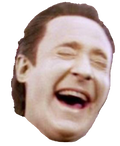Farmer-Owned
I love how in America, “farmers” are just the land or business owners, and the people doing the actual work are just laborers.
The “farmer” sits in his air conditioned f-150 while a 45 year old mother of two from Guatemala does the actual farming.
It goes back to settler colonialism. I often think about the section of Settlers that breaks down the class composition of the settler population.
The South Carolina settler class structure shows only an intensification of the same bourgeois features evident at the national level:
- 86% bourgeois & petit-bourgeois
- 3% — Great Planter elite (above 1,000 acres landholding)
- 15% — planters (500-999 acres)
- 8% — merchants & shopowners
- 5% — Professionals
- 42% — Middle & small farmers (under 500 acres)
- 10% — Artisans
- 14% — Laborers (majority only temporary)
When we speak of the small, land-owning farmer as the largest single element in settler society, it is important to see what this means. An example is Rebecca Royston of Calvert County, Maryland, who died in 1740 with an estate worth 81 £ (which places her well in the middle of the small-medium farmers). That sum represented the value of 200 acres of farmland, 31 head of cattle, 15 of sheep, 29 pigs, 1,463 lbs. of tobacco stored for market, 5 feather beds, 2 old guns, assorted furniture, tools and kitchen utensils, and the contract of an 8 year-old indentured child servant. No wealth, no luxury, but a life with some small property, food, shelter, and a cash crop for market. Certainly a far reach upwards from the bitter, bare existence of the colonial Afrikan proletariat (or, for that matter, the British or French proletariat of the period).
No wealth, no luxury,
TIL 200 acres of farmland isn’t considered wealth
They mean accumulated money
oh so the least fundamentally important type of wealth
- 86% bourgeois & petit-bourgeois
the kulaks
Oh my god, remembering the outrage boomers had over this and the pancake syrup no longer being racist. Peak chapo trap subreddit content.
Like Timothy Leary getting injected full of LSD in his last minutes alive
Hahahaha hahaha ahhh somewhere between

And

Who’s land? WHOS LAND?!
Well it’s gotta be the lakes. Land O’ Lakes = Land Of The Lakes = The Land Belonging To The Lakes. But bodies of water aren’t persons under US law so we could just take 'em!
(edit: this is among the worst things ive ever written)
I think you gotta confer with maritime law on this one
THEY MADE THE BUTTER WOKE









